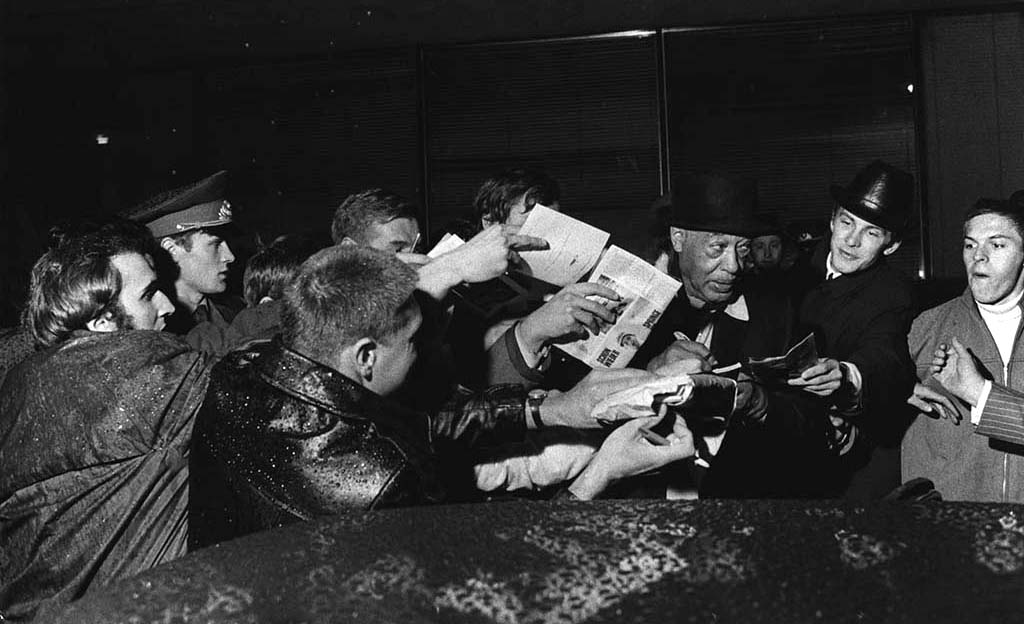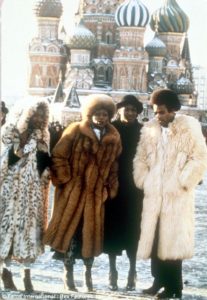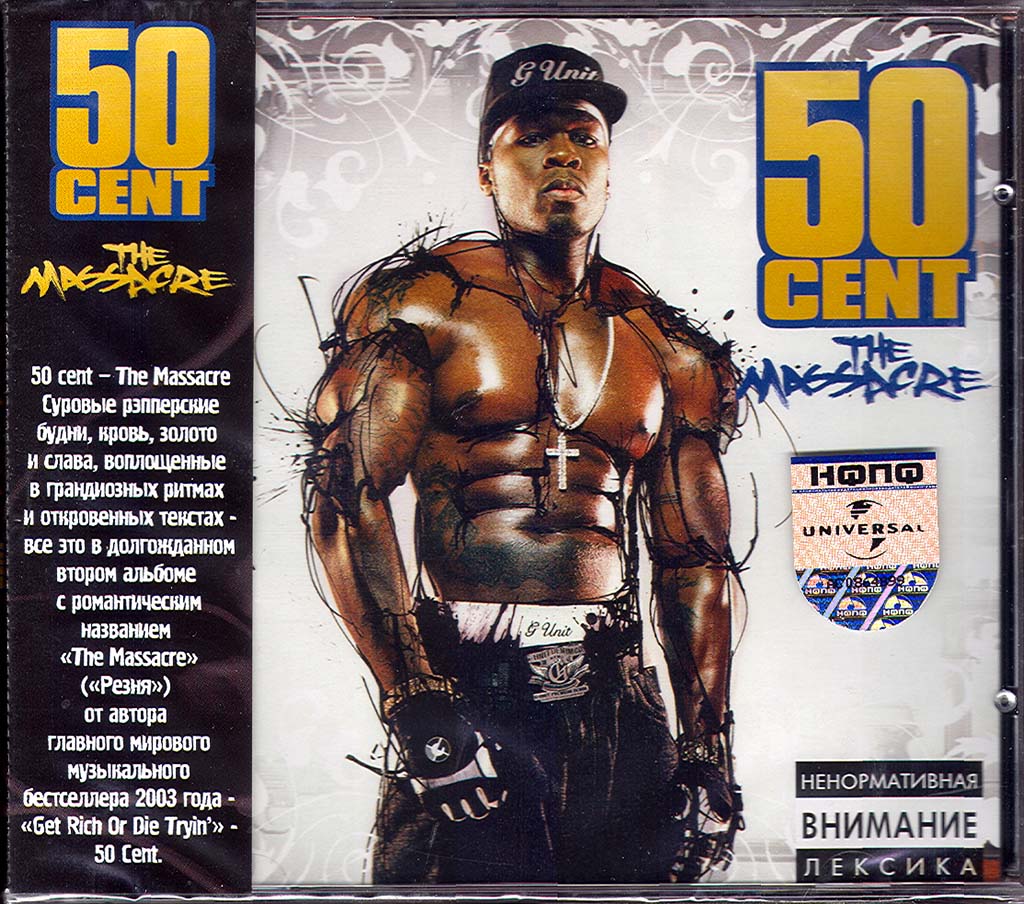In the following article, Russian DJ Ivan Tchijevsky describes exclusively for BlackPast.org the long history of black music and black musical performers in Russia. Writing from a musical festival in Odessa, Ukraine in June 2019, he outlines his views below.
As I visit festivals of electronic dance music in Russia and abroad, I have begun to reflect on the moment I found myself at a disco for the first time in my life. It happened somewhere in Georgia in the old Soviet Union in 1986. I was four years old at the time. The daytime disco had been organized for vacationers in a sanatorium, mostly parents and their children from throughout the Soviet Union. A tanned man in a yellow top and with African style hairdo was the DJ. Not only was black-influenced music played over the loud speakers but the event was part of a collective performance of elements of the new type of party dance that was sweeping across the country.
Later in the 1990s I visited several rock festivals and events in Moscow and other ex-soviet cities connected with electronic music. As I saw these performances I began to think about the sources of this international phenomenon. By this point I had been involved in the production of electronic music. It seemed to be a logical following of a family tradition. Several members of my family had been jazz music performers in the Union of Soviet Socialist Republics (USSR) since the mid-1960s. Besides their and my connections to this music, I began to think of the long historical and lyrical connections that brought me and millions of other Russians to an appreciation of these various musical styles imported from the United States and later from Africa. In this article I offer a brief chronology of this cultural integration which occurred in several stages.
The people of Russia first became familiar with pre-jazz forms of black music in the late 19th Century. American black orchestras and singing performers such as the Fisk Jubilee Singers first came to Saint Petersburg in the 1890s. At the same time ragtime, a more secular music, became popular, bringing with it “American” dances such as the cakewalk. Ragtime was performed in salons and garden parties as well as by brass bands which played in the streets or in night clubs and other entertainment venues in Russia’s major cities.
By the beginning of the 20th Century Brazilian maxixe and Argentinian tango entered Russia through Europe just before World War I and gained even greater popularity across the country. In Saint Petersburg, Moscow, and other major cities, mostly African American vocal-instrumental acts such as “The Louisiana Amazon Guard,“ “The Kristy Creole Duet,” and “The Harris Trio” as well as its individual performers such as Coretta Alfred, Emma Harris, Fannie Smith, and Ollie Burgoyne, began performing around 1903. Other African American performers such as Pearl Hobson, Belle Davis, Abie Mitchell, Josephine Morcashani, “The Black Troubadours,” and popular duet “Johnson & Dean” all had developed a following in pre-Revolutionary Russia. The Russian revolutionary period, 1917-1919 interrupted these performances but did not end the appreciation of the Russian people for African American music.
October 1, 1922 is considered the birthdate of Soviet jazz even though it was officially prohibited by the USSR. Despite the ban a number of African American jazz performers continued to visit the country. In 1926 the “Jazz Kings,” which included many of the early stars of jazz, toured Soviet cities. The Jazz Kings were New Orleans musicians including Frank Withers – trombone, Sidney Bechet – clarinet, Benny Peyton – drums, Fred Coxcito – baritone-saxophone, and Dan Parish – forte piano. Around the same time Sam Wooding’s variety show The Chocolate Kiddies, set to music by Harlem songwriter Noble Sissle, was seen by Soviet audiences. Film clips from this show were included in documentarian Dziga Vertov’s 1926 documentary A Sixth Part of the World, which was designed to introduce the world to the new Soviet society.
Eight years later on March 29, 1934 Coretta Alfred — who had performed in both pre-Soviet Russia and in the Soviet Union — celebrated the 30th anniversary of her creative work on the pre-Revolutionary and Soviet stage with a radio concert with other prominent Soviet artists. The radio program was recorded in Paris, France where it was highly praised by the French press. Coretta Alfred was one of the first African American performers to record and release vinyl records in Russia in early 20th century.
African Americans Paul Robeson and Marian Anderson also performed in USSR in the 1930s. By the end of that decade African American performance culture became a popular segment of Soviet variety shows, cinema, and popular dance. For example, a famous cover version of Duke Ellington’s 1936 Caravan was recorded by Soviet jazz band leader Adi Rosner.

Courtesy National Museum of American History (AC0301-0000039)
The 1950s were a difficult time for jazz in USSR as western cultural influences were increasingly restrictive by the Soviet government. Nonetheless, western musical influences continued to have an audience. Leonor Gonzales Mina, a prominent Afro-Columbian musician and actress, performed at the Sixth International Festival of Youth and Students in Moscow in 1957. Her performance became a milestone event. By the 1960s, black-influenced jazz seemed to be making a comeback marked by the two-month 1962 tour of Benny Goodman’s orchestra around the USSR which showcased the talents of Joya Sherrill, Joe Newman, and Teddy Wilson. Five years later in 1967, the band of American saxophonist Charles Lloyd came to the Tallinn (now Estonia) jazz festival.
Four years later in 1971 when the plane carrying Duke Ellington and his orchestra arrived in Leningrad (now Saint Petersburg) it was met by huge crowds. The band responded by playing Dixieland music on the landing field to the appreciative audience. Ellington’s Orchestra, the largest jazz band to tour the Soviet Union, included six saxophones: Russell Procope, Paul Gonsalves, Harold Ashby, Norris Turney, Harold “Geezil” Minerve, and Harry Carney; trumpets: Cootie Williams, Mercer Ellington, Harold Manny Johnson, Eddie Preston, and Johnny Coles; and trombones: Malcolm Taylor, Mitchell “Booty” Wood, and Chuck Connors. Joe Benjamin was on Bass and Rufus “Speedy” Jones was on drums. Two vocalists, Ned Brookshire and Tony Watkins, also accompanied the band.
Wherever Ellington’s Orchestra performed, tickets sold out. Each of three Ellington concerts in Kiev (now Ukraine) were attended by more than 10,000 people while more than 12,000 came to each of his shows in Moscow. Later Ellington recalled: “Do you know that some of our concerts lasted four hours? Yes, and no one complained, not the audience, not the stage workers, and not even the musicians in the orchestra. Russians came to listen to our music, with no other reason. Ten or twelve times they encored us.” One consequence of the concerts: more Soviet jazz musicians released cover versions of the orchestra’s performances than those of any other musician. More than 100 albums are listed in the vinyl catalog of the Soviet Union as tributes to this exuberant African American composer and performer.
The success of the Duke Ellington Tour led to other African American jazz artists visiting the Soviet Union. In Moscow, Leningrad, and other Soviet cities, local Russian jazz men played with musicians of some of the best jazz orchestras from the United States. Jazz became the music of thousands of Russians and the jam session led to significant information cultural exchange between artists of the USSR and the US. These exchanges also had an unintended consequence: more than one quarter of the soviet jazz musicians left for New York City as soon as the Soviet government in 1973 loosened control over emigration from USSR.
Jazz was the most popular African American-influenced music in the 1970s but even in that decade, its dominance was being challenged by newer black musical genres including rhythm and blues\soul music and disco and by the 1980s, hip-hop, jungle and house music. Stevie Wonder was one of the most important influences on the Soviet variety of R&B\soul music. More Soviet musicians covered his songs than any other artist of these musical styles. These covers both reflected and promoted the period of musical “thaw” for a younger generation of Soviet musicians who now eagerly displayed their own versions of soul-jazz, fusion, jazz-rock, folk-rock, and funk. Both the pre-jazz era (1890-1920) and the long period of Soviet jazz (1922-1975) had introduced thousands of Russian and Soviet citizens to African American music. The next generation was ready for the new music and dance experience.
That experience came on December 7, 1978 when Boney M, a Euro-Caribbean vocal group from West Germany, landed at Moscow’s Sheremetyevo Airport. Vocalists Liz Mitchell, Maizie Williams, Marcia Barnett, and Bobby Farrell, and their band along with seven tons of equipment — much more than any performer had brought previously — indicated that something magnificent was planned. And it was magnificent.

Boney M made fireworks on the stage of the Russia Concert Hall in Moscow, something no one had seen before. The musicians performed in glittering clothes with feathers, the stage was colorful and bright. The American magazine Time called the tour of Boney M around USSR “the greatest event of 1978.” They recorded an album called “The Legend of Gold Disco” at a Moscow studio. Nonetheless Soviet government censors considered the lyrics, which included “Russia’s greatest love machine and lover of the Russian queen,” far too explicit for Soviet citizens. Although the albums were recorded on the label Melody, and produced in factories across the Soviet Union in Tashkent (now Uzbekistan), Riga (now Latvia), Tbilisi (now Georgia), and Aprelevka near Moscow, only 100,000 were actually pressed. Given those numbers in a nation of more than 287 million citizens in 1978, it was not surprising that the album became rarity in a blink of an eye. Soviet lovers of music were ready to pay any sum of money for it; crowds gathered immediately at those shops where these albums appeared, and sometimes local authorities had to call out the police for crowd control. The success of Boney M led to other disco artists visiting the Soviet Union in the 1980s and as had happened with previous generations, numerous young Soviet musicians created cover versions of disco hits by various African American, and now African and Afro-European artists.
Almost simultaneous with the African American-influenced disco craze in the Soviet Union, black hip hop culture was introduced through song. As the Soviet Union itself was being challenged from young people pushing up for change from below and the Glasnost and Perestroika reforms of new Soviet leader Mikhail Gorbachev filtering down from the top, information about the emerging hip-hop culture began to trickle into the Soviet Union, widening and deepening the sub-cultural space in our country. In 1984 a cover of “Rapper’s Delight” by the group “Chas Pic” (“Rush Hour”) appeared only five years after the Sugarhill Gang recorded the original version in New York City. The year 1986 saw the beginning of break dancing in the USSR, with release of the cult film “Courier.”
Ironically jazz continued its popularity with an older generation of Soviet citizens. In 1991, the last year of existence of the Soviet Union, the First International Moscow Jazz Festival took place with the world titans of jazz, Sun Ra, Freddie Hubbard, Benny Golson, Lester Bowie, and Bradford Marsalis, playing alongside Soviet stars. We should remember that even as jazz was fading in popularity in the USSR, Afro-American jazz and its performers helped give birth to the new wave of disco and hip-hop dance culture in the Soviet Union.
In 1992, a year after the collapse of the Soviet Union, the American film “The Bodyguard” was released and soon Whitney Houston became the most recognizable African American singer in Russia and most of the other former Soviet Republics. Her popularity was aided by the rise of video rental shops and street-corner vendors of audiocassette tapes, both of which had not been seen in the old Soviet Union. Information about Houston and other new artists as well as new dances and music now spread far more quickly across the former Soviet republics. New (post-Soviet) radio stations, magazines and night clubs also accelerated the growth of new musical and dance infrastructure in Russia and former soviet republics such as Ukraine and Latvia.
These developments allowed space for a spontaneous experiment which I personally witnessed. I would like to pay special tribute to concerts of representatives of UK alternative stage, Skunk Anansie and Dub War, held in Moscow in 1996. In my opinion, these concerts reflected the heart of the new 1990s music that was completely different from those musical and dance forms that had visited Russia before. Also, DJ Green Velvet, an African American path maker for post-Soviet house music, visited Russia in 1997. The same year the first African American rapper, N’Pans, came onto a Russian stage. He was followed by a number of other hip-hop artists including Goldie, 4hero, Grooverider, and LTJ Bookem, all of whom had a huge impact on the development of separate musical and dance sub-culture as well as growth of the new club and festival experience in Russia.
In 1998 one of the leading hip-hop groups, Run-DMC, appeared in Moscow. Their tour promoted the second wave of break dance which in turn led to a number of new dance schools as information about the various musical sub-styles that appeared in the United States in the last two decades of the 20th century reached our county. In my view, the third stage of development of club dance culture and the wider range of sub-cultural dance phenomena, connected with such directions as disco and funk, all came together with James Brown’s concert at the Kremlin in 2002.
Russian and later Soviet popular culture changed over time because of numerous influences both from within the nation and from abroad. One overlooked but extremely influential force in that change was the Afro-Beat, the varied expressions of African American music that penetrated deeply into the Russian soul.

